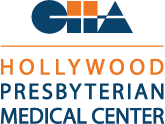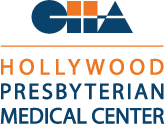|
Glaucoma is typically associated with older adulthood. However, according to the Genetics Home Reference, published by the United States National Library of Medicine, heredity can increase the risk of developing glaucoma at younger ages. In some cases, congenital structural problems in the eye can become obvious during a infant’s first year. These problems may be due to genetic abnormalities, which also affect other parts of the body. In the case of infants and young children, the disease is referred to as “primary congenital glaucoma.” According to the Genetics Home Reference, about one out of every 10,000 people has primary congenital glaucoma. Other people may begin to experience the onset of primary open-angle glaucoma (POAG) in childhood or during early adulthood. If symptoms appear before the age of 40, doctors call the disease “juvenile open-angle glaucoma,” or “early-onset glaucoma." Statistically speaking, about one of every 50,000 individuals will develop juvenile open-angle glaucoma. After the age of 40, about one percent of people in the world will develop POAG. BrightFocus Foundation notes recent research at both the national and international levels has produced a significant quantity and quality of new information about the genetic component of glaucoma. For example, we now know more about the following glaucoma-related genetic mutations. MYOC geneAccording to the Genetics Home Reference, anywhere from one-tenth to one-third of the individuals who develop juvenile open-angle glaucoma, and at least some born with primary congenital glaucoma, have mutations to the MYOC gene. The MYOC gene delivers instructions for the production of a specific protein named myocilin. This protein helps form the structures of the ciliary body and the trabecular meshwork within the eye, both of which help regulate intraocular pressure (IOP). According to a 2009 article in the journal Experimental Eye Research, scientists linked the myocilin protein to increased intraocular pressure and to primary open-angle glaucoma, both in its early-onset and later-onset forms more than a decade previously. The protein was the first gene to be identified as playing this role. Currently, clinicians believe myocilin works in tandem with other proteins as part of a larger process. Researchers believe certain genetic mutations may affect the protein in ways which render it incapable of participating in this process. The mutated myocilin, unable to incorporate itself into the usual process, may start accumulating inside the structures of the ciliary body and the trabecular meshwork. This overabundance of myocilin may then help create the blockages that inhibit drainage and raise a person’s intraocular pressure, even when the individual in question is well under the typical age at which glaucoma develops. CYP1B1 and LTBP2 genesScientists believe another gene—CYP1B1—may play a role in the development of early-onset glaucoma. Research indicates 20 to 40 percent of all young patients diagnosed with primary congenital glaucoma have mutations to this gene. Additionally, some of the older juvenile open-angle glaucoma patients also show CYP1B1 mutations. This particular gene is responsible for the body’s manufacture of a sub-type of the cytochrome P450 protein. As with myocilin, the P450 protein can be found in key eye structures, which include the ciliary body and the trabecular meshwork. Recent research suggests defects in the CYP1B1 protein coding system may cause malformations of the trabecular meshwork. According to the BrightFocus Foundation, a mutation of the LTBP2 gene is another factor that may be involved in primary congenital glaucoma. The LTBP2 gene assists in cell adhesion. Inheritance patterns vary among glaucoma-related genetic mutationsAccording to the Genetics Home Reference, mutations in the CYP1B1 and the LTBP2 genes typically have an inheritance pattern known as autosomal recessive. This means both parents of a child may carry the specific mutation associated with glaucoma but not develop the condition themselves. However, when two carriers have biological offspring, some of those children may inherit the genetic defect from both parents. These individuals will develop the disease in early childhood. The MYOC gene mutation, which produces the defective myocilin protein discussed above, has an inheritance pattern known as autosomal dominant. In this case, a child need only inherit the associated genetic mutation from one parent in order to develop the disease by early adulthood. Early diagnosis may prevent loss of sightAccording to the American Academy of Ophthalmology, headaches and optic neuropathy are generally among the initial symptoms exhibited by younger patients developing POAG. Left uncorrected, POAG can lead to irreversible blindness as damage occurs and the patient incrementally loses vision. If the condition is diagnosed early, however, a patient may, through medical interventions including medication or surgical treatment, experience minimal loss of sight. The American Academy of Ophthalmology notes juvenile open-angle glaucoma often remains undetected until it has progressed significantly, at which point it has already caused extensive damage to the optic nerve. Treatment for glaucoma in younger people often entails surgery. Genetic screenings for certain types of early-onset glaucoma are already available. Young adults with genetic screenings or family histories indicative of a higher risk for glaucoma should receive regular dilated eye exams. This can help ophthalmologists identify, and potentially treat, symptoms of the disease in the early stages. |
 ENGLISH
ENGLISH  РУССКИЙ
РУССКИЙ 


